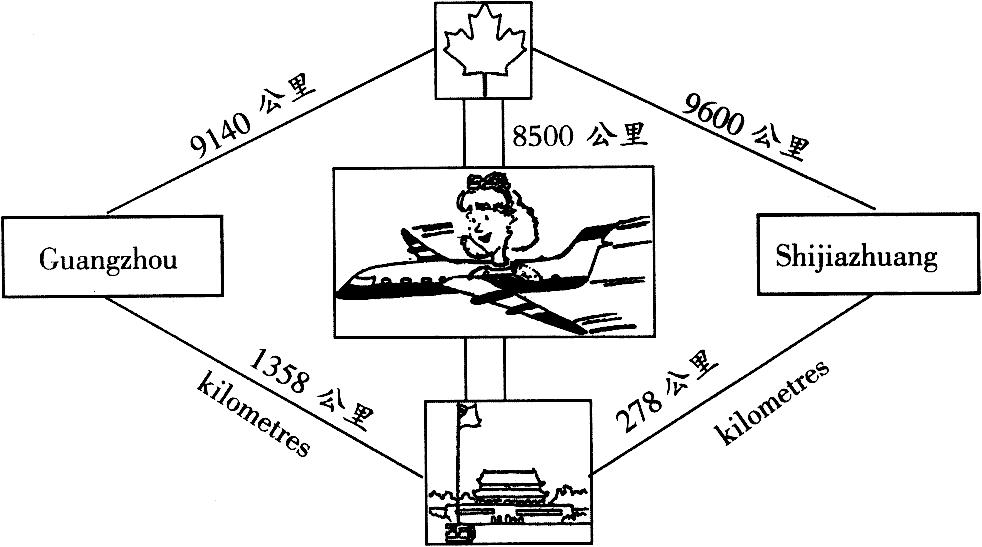|
题文
| 看图,填空。 |

1. How far is it from Beijing to Canada?
It's about kilometres.
2. How is it from Beijing to Shijiazhuang?
It's about kilometres.
3. How is it Beijing to Guangzhou?
It's about 1358 kilometres.
4. How is it Guangzhou to Canada?
It's about 9140 kilometres.
5. How is it Shijiazhuang to Canada?
It's about kilometres. |
题型:填空题 难度:中档
答案
1. eight thousand five hundred
2. far, two hundred and seventy-eight
3. far, from
4. far, from
5. far, from, nine thousand six hundred |
据专家权威分析,试题“看图,填空。1.HowfarisitfromBeijingtoCanada? It'saboutkil..”主要考查你对 基数词,介词,疑问词组 等考点的理解。关于这些考点的“档案”如下:
基数词介词疑问词组
考点名称:基数词 考点名称:介词 考点名称:疑问词组
|

